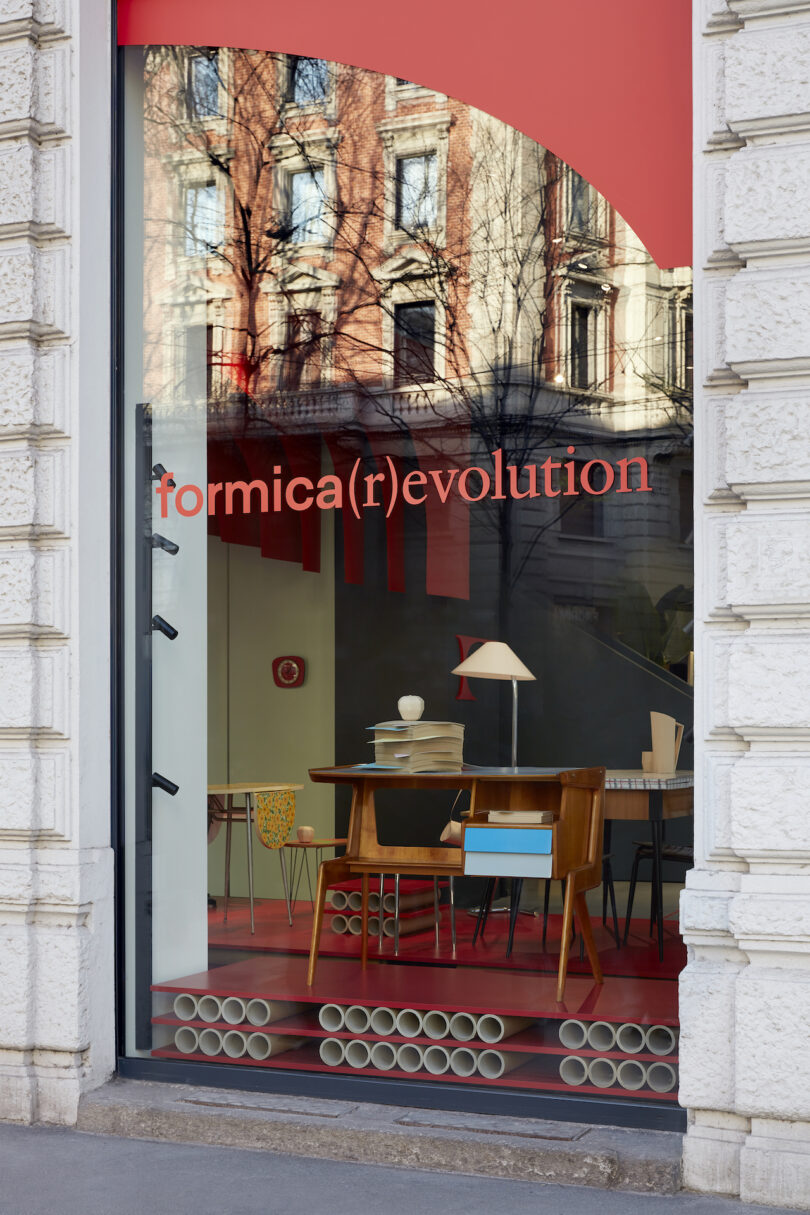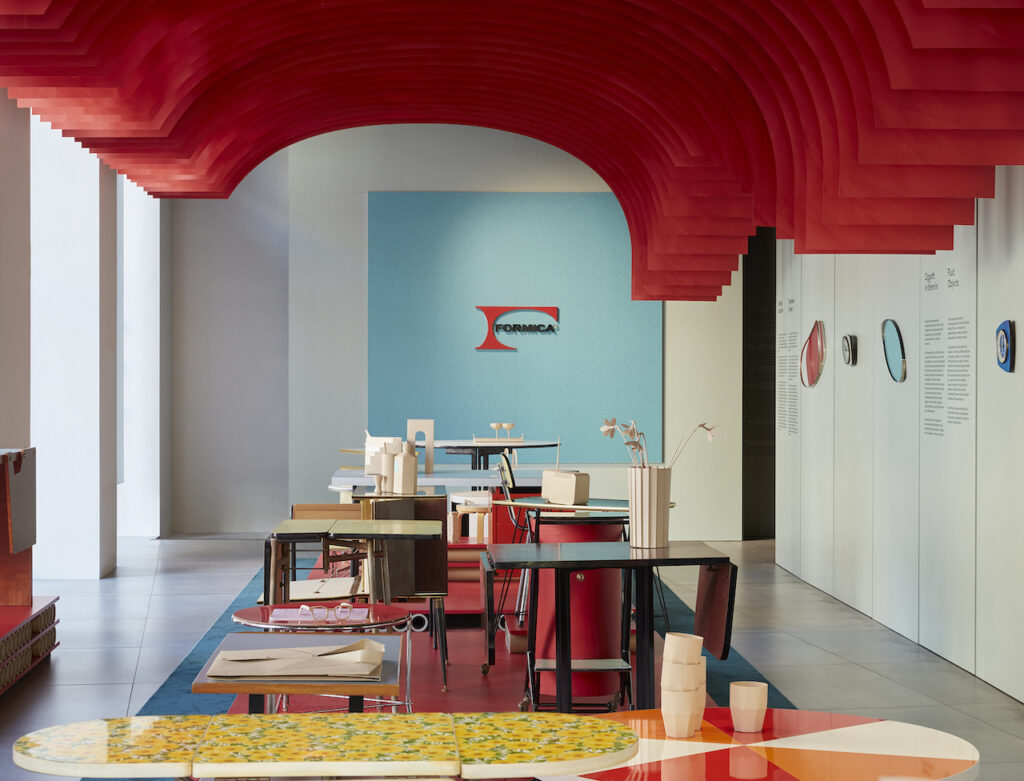Often dismissed as dated or utilitarian, laminates don’t always get the love they deserve. But at Milan Design Week 2025, Formica Group gave them a well-deserved spotlight. The brand staged a compelling case for laminate’s place in design history with Formica (r)Evolution. Housed at FENIX Scenario, the exhibition took visitors on a layered journey – literally and metaphorically – through the decades, showcasing over 40 pieces that highlight Formica’s revolutionary role in shaping modern living.
The exhibition’s scenography, designed by multidisciplinary firm Sopa Design Studio, leaned into the foundational element of Formica laminate: paper. Stacked layers of paper are pressure-pressed at high temperatures to create the raw material that eventually becomes the surface patterns and forms we know today. Here, the humble origin was brought to life with bold impact.

Upon arrival, visitors were greeted with a dramatic installation of red paper cascading from the ceiling, a nod to both Formica’s signature material and its iconic logo. The exhibition then unfolded across three thematic sections: Signature Design, Fluid Objects, and The Roaring ‘60s and ‘70s. Curated by Daniele Lorenzon (founder of the galleries Compasso Design and Gilda&Co) and architect/designer Alessandro Pedretti, the exhibition celebrated both legacy and innovation.
Signature Design spotlighted objects by icons like Charles and Ray Eames, GioPonti, and Alvar Aalto, showcasing how Formica laminates played a role in some of their most recognized works.
Fluid Objects explored the material’s adaptability – featuring pieces that transform through shape and function.
And The Roaring ‘60s and ’70s offered a vibrant look into two pivotal decades of Formica’s evolution across homes, public spaces, and commercial environments.
Further emphasizing the relationship between Formica’s legacy and its material origins, the exhibition also featured handcrafted works by Yoko Miura, a Japanese papercraft artist. Her poetic, minimal sculptures – ranging from a teacup to a handbag, a vase of flowers to an umbrella – were made entirely from paper. These everyday objects subtly animated the furnishings on display, adding a quiet layer of storytelling that tied the history of laminate back to its simplest form.
While Milan Design Week has come a close, Formica (r)Evolution hinted at what’s next: a permanent exhibition concept at FENIX Scenario to continue welcoming industry professionals and design lovers alike into the ever-expanding world of laminate’s creative potential.
Formica T150 record holder by Osvaldo Borsani for Tecno in 1966
Formica Vanity
Formica Children’s stools by Alvar Aalto made for Artek in 1935
Formica Extendable Checkered Table with Matching Chairs
Formica Tea Table designed by Charles and Ray Eames for Herman Miller in 1950
Formica Desk designed by Gio Ponti in 1940
Formica Bedside Table on Wheels by Ermenegildo and Eugenio Soncini for the Madonnina nursing home in Milan in 1957
Formica Plant Stand
To learn more about the Formica (r) Evolution, their latest projects, or events, visit formica.com.
Photography by Sara Magni.
Read the full article here


